 = Let us consider the way in which we spend our
lives
= Let us consider the way in which we spend our
lives
“A good book is the plectrum with which our else
silent lyres are struck.” ~Henry David Thoreau
Henry David Thoreau was born on July 12, 1817, in Concord,
Massachusetts. He attended Harvard from 1833 to 1837. He had a
complete fascination with the natural world and great literature
in general. Life seemed to him to be a playground of thoughts.
He draws from a great volume of understanding and his thirst for
information seems unquenchable.
If you have read or listened to The Iliad and The Odyssey,
you will especially enjoy some of his references. He also weaves
verses from the Bible into his writing in an interesting way and
you will appreciate his writing more if you have a basic
understanding of Homer, Shakespeare, Plato, Chaucer, John
Milton, Alexander Pope and Emerson.

Henry David Thoreau
Within this book you will meet a man of independent thought
who is completely consumed with the sheer delight of discovery.
To wander in the woods in solitary thought was a spiritual
experience. He was also involved in a philosophical and literary
movement which flourished in New England from 1835 to 1860. Both
he and Ralph Waldo Emerson were at the center of
transcendentalism and influential in American thought and
literature.
Thoreau’s thoughts flow from one subject to the other
throughout this book. The contents include Walden, A Week on the
Concord and Merrimack Rivers, Cape Cod, The Allegash and East
Branch, Walking, Civil Disobedience, Slavery in Massachusetts, A
Plea for Captain John Brown and Life Without Principle.
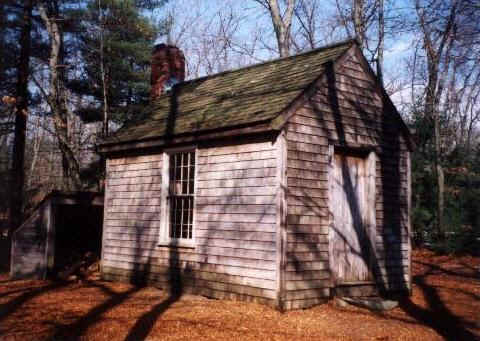
Replica of Thoreau's Cabin
Walden – Walden represents our ability to follow our
individual dreams all while being willing to be satisfied with
less in order to gain greater intellectual freedom.
Thoreau built himself a cabin on the edge of Walden Pond and
lived there from 1845 to 1847. During this time he supported
himself by surveying and growing vegetables.
He rambled about in the woods and collected his thoughts in
detailed journals. His friendships seemed few and far between,
however the friends did make seemed to turn into deeply
satisfying relationships.
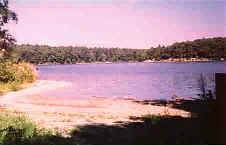
Walden Pond
Walden Pond becomes Thoreau’s lover. He drinks from her
cool refreshment, swims in her enveloping waters, knows her
every mood in summer or winter and observes her with the utmost
attention as she freezes, melts and dances playfully in the sun.
The descriptions of this pond are well-worth reading as he has a
talent for capturing her very essence with his extensive
vocabulary.
A Week on the Concord and Merrimack Rivers – Thoreau and
his brother made a river voyage in a boat they built. This
experience was the basis for his first self-published book in
1849. One minute you are reading about the river and the next
you enter an entirely different world of thought about
friendship.
“You are the fact in a fiction, - you are the truth more
strange and admirable than fiction. Consent only to be what you
are. I alone will never stand in your way. This is what I would
like, -to be as intimate with you as our spirits are intimate,
-respecting you as I respect my ideal. Never to profane one
another by word or action, even by a thought.”
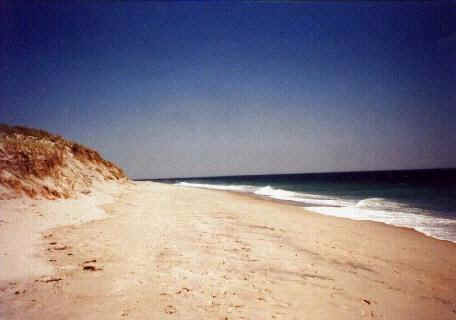
Cape Cod
Cape Cod - Thoreau made the first of four trips to Cape Cod
in 1849, and he later delivered lectures about his experiences.
Allegash and East Branch – A journey made in 1857 with
Edward Hoar and an Indian guide who brings some humor to the
tale. Edward gets lost and we see a side of Thoreau that shows
his concern for his fellow human beings. He is normally just so
independent.
Walking – Quite humorous at times and explains his love for
walking and for letting the wildness in man come out to play.
Civil Disobedience –This essay seems to have been born
during the time Thoreau had to stay in a prison because he
refused to pay a poll tax. This essay is said to have influenced
Gandhi in India and the civil-rights movement led by Martin
Luther King.
Slavery in Massachusetts – A lecture given in 1854 at an
Independence Day meeting of the American Anti-Slavery Society.
A Plea for Captain John Brown - In October 1859 the
abolitionist Capt. John Brown raided the federal arsenal at
Harper's Ferry, and Thoreau spoke in defense of his character.
Life Without Principle – Here he gives his views on rushing
off to California in search of gold.
This man’s mind was a deep forest and his descriptions of
nature are quite inspiring. Where else would I have read about a
whale’s vertebra being used as a mortar or been so highly
entertained by his conversations with an eccentric elderly
gentleman?
There are also descriptions of shipwrecks and discussions
about survival in the woods. Thoreau’s humor will often catch
you unaware and if you collect quotes, you will find quite a
few.
Since most of us will never build our own homes, cook over a
wood fire on a regular basis or take our baths in a pond, this
book presents a lifestyle we may never experience. You will
rarely find an individual in your own circle of friends who
would encourage you to downsize your life in a super-size world.
The uncommon perspective presented in 732 pages will appeal
to writers, poets, philosophers and anyone who values their
thoughts more than material possessions.
During the week of reading this book, I was inspired to take
a trip out to the mountains, walked along a river, and worked in
my garden with a new sense of purpose. The world became a
vibrant, new environment filled with possibilities.
Intense reading? Yes. A week’s worth of reading will
inspire you for a lifetime.
If at all possible, read while this book while floating in a
boat on a pond or while on a camping trip in the woods.
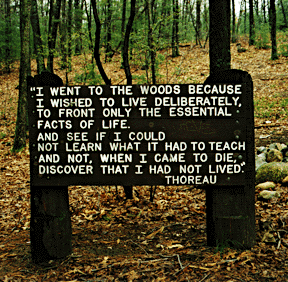
Learn
to Build a Cabin
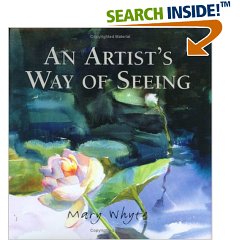
An Artist's Way of Seeing
 Lotus Blossoms and Sunflowers, July 27, 2006
Lotus Blossoms and Sunflowers, July 27, 2006
Reviewer: The Rebecca
Review
"I like to arrive early in the morning at the pond so
that I can watch the lotus flowers open before noon." ~
Mary Whyte
Mary Whyte's art has been exhibited by art galleries and has
been collected by museums. She is also the author of Watercolor
for the Serious Beginner and has illustrated children's books. I
think the reason people love her art is because of the spiritual
elements she is able to capture in watercolor. She also adds a
magical dimension with color, like she adds blue to the steam
from the pan on a stove. The sky burns in a rosy orange as a
beautiful woman holds sunflowers.
What I love most about her paintings is the use of blue colors
to warm the moments. She also has an expert eye for capturing
reflections in water. Her "Moon Over the Meadow" makes
you wish you were there, bathed in the blue silvery light.
Mary Whyte's paintings are all beautiful expressions of detailed
observation, but where she truly excels is when she paints
beautiful women in fields of flowers. They are just stunning.
The beauty of this book is not only the artwork; it is also in
the poetic writing and artist comments. Like a diary of
experience, Mary Whyte explores landscapes, discusses specific
ways she captures moments and is a true teacher in the way she
explains how you can create your own watercolor magic. An
Artist's Way of Seeing is a true inspiration and rare find!
~The Rebecca Review

The Welcoming Garden
 Blueprints for Welcoming Front-Yard Combinations, July
27, 2006
Blueprints for Welcoming Front-Yard Combinations, July
27, 2006
Reviewer: The Rebecca
Review
"The new American garden means living and walking among
plants, following a path from driveway to front door among
ornamental grasses and Russian sage, talking with friends under
apple and cherry trees at the front of the house." ~Gordon
Hayward
Gordon Hayward's ideas can be incorporated into any style of
garden. If you have a walkway to the front door or need to
manage an especially large lawn, his ideas will create a
beautiful nurturing space you will love coming home to.
The book is organized in a step-by-step design. You can see the
complete design from a landscaper's viewpoint and then see the
finished beauty in pictures. Some of the features include:
An Old Weathered House with a Cottage Garden
A Home Completely Surrounded by a Garden
A Small Garden around Big Front Steps
A Garden Running Straight to the Front Door (cover picture)
Sidewalk Garden
A Generous Sitting Area in a Small Front Garden
A Sunny Organic Garden
Each idea also has a special section of "Design
Principles." The author explains the pictures so you gain a
sense of how a designer thinks when planning out a new yard.
There are many ideas to love and there is a good balance of
creativity and practical solutions.
~The Rebecca Review
|